Longtime followers of my website may know that the 105mm focal length is one I have gravitated towards for many years of my photography. From my beginnings with the classic Nikon 105mm f/1.8 AI-s, I enjoyed the pleasure of dabbling with other lenses such as the up-close Nikon Micro 105mm f/2.8 AI-s and even the super-compact Nikon 100mm f/2.8 Series-E. All three of these lenses provide a medium-long telephoto on the APS-c cameras I used them on, and they all served their uses in my photography. In fact, I still dust off the Micro 105mm f/2.8 for all of my product shots! However, until late last year, I had all but abandoned the focal length for general photography and transitioned to the Nikon 85mm f/1.4 AI-s instead for my moderate telephoto needs. The 85mm has less chromatic aberration than the 105mm f/1.8 at equivalent apertures, focuses close enough for quasi-macro shots, and provides much more separation than the Series-E lens ever could.
At the same time, there was always a lens that intrigued me in the Sony lineup: the 135mm f/2.8 STF. With a special apodization element, the lens rendered out-of-focus backgrounds unbelievably smooth, giving “creamy bokeh” a whole new meaning. Even ignoring the current $1400 price tag, the lens wouldn’t make a lot of sense for my style of shooting on an APS-c camera. So for a while, the 85mm f/1.4 remained my go-to for low-light medium telephoto work. That is, until Venus Optics came onto the scene with their unique 105mm f/2 STF lens in mid-2016, promising the same kind of bokeh-smoothing effect with its own apodization element, all at a moderate price tag of $700! At this price point, and with these kinds of features, the obvious curiosity concerns its performance wide open as well as the effectiveness of its apodization element. Does it deliver? Read on to find out! As always, if you are unfamiliar with my lens review style, check out this post first!
————————————————————————————————————————————–
Specifications
Full Name: Venus Optics Laowa 105mm f/2 Smooth Trans Focus
Dimensions: 3 inches/76 millimeters wide, 3.9 inches/98.9 millimeters long, with a dense weight of 26 ounces/745 grams. With the hood on, another couple inches and ounces are added to the lens, 60% heavier than the Sony a6500 the lens is tested on. Side note: this lens is available in available in Nikon F, Canon E, Sony A, Pentax K, and Sony FE mount!
Close-Focus: Marked at 3 feet/.9 meters, the same as the Nikon 105mm f/1.8 AI-s
Price: $700 on Laowa’s website (as well as all other storefronts currently). Regardless of which mount you choose, buying the lens through that link helps support this site and future lens reviews!
Miscellaneous: 9-bladed f-stop aperture stopping down to f/22, 14-bladed T-stop aperture stopping down to T8, 67mm filter thread, plastic lens hood, apodization element, manual focus only, 270 degrees of focus rotation, metal mount, pinch-style lens cap, first hands-on impressions of this lens can be seen here
Closest Competitor: Sony FE 100mm f/2.8 STF GM OSS–early reviews show it to be a fantastic performer and its OSS helps to mitigate its slower f/2.8 aperture. However, at over twice the cost at $1500, it’s a tough sell especially since the Laowa 105mm opens up to f/2.
The “Feel”
As mentioned above, the Laowa 105mm sports a special apodization element that is designed to increase the smoothness of bokeh. There’s a lot of physics/optics talk about how exactly lenses like the Laowa accomplish this, but to put it simply, think of the element as a neutral density filter that gets thicker (blocks out more light) as the element stretches to the periphery of the optical path. What this does is help smooth out any hard edges within an image, which is more easily seen in how it handles a simple point of light as seen below:
This same apodization element is what affects an STF lens’ ability to transmit light to the sensor. Whereas the aperture wide-open is f/2, due to the apodization element the actual amount of light hitting the sensor is T3.2, or about 1.3 stops less. As such, STF lenses are better suited to portraiture, scenes with abundant light, or work on a tripod. With modern cameras, T3.2 is still decently fast, but will require the photographer to crank up the ISO and/or use a camera’s in-body image stabilization. The a6500 is one such camera that has decent high ISO performance and IBIS, so the Laowa ends up performing well in all but the darkest situations.
Perhaps the biggest surprise for me when I originally took the lens out of its packaging is its heft. The Laowa 105mm is one dense lens, as it should be with all the extra elements and apertures encased in metal. Everything is held together pretty tight, and overall feels almost as familiar as my trusty AI-s Nikkor tanks. In fact, I only have a couple gripes with the lens’ build as a whole. Although it does its job keeping out stray light, the non-flocked lens hood feels super cheap and doesn’t mount very tightly when “locked” into place. Also, on my copy in particular, the f-stop aperture has trouble reaching f/22 without wiggling back and forth between f/16 and f/22 (not that this matters for actual photography…). As always, does this optic hold up to my four pillars of shootability?
- Small size? Not quite. For its focal length and maximum aperture size, it is relatively compact without the lens hood. As you’ll find in the testing though, you will rarely want to shoot this lens without its hood, so that’s strike one so far.
- Light weight? Nope. Made of mostly metal and glass (with the extra apodization element and T-stop aperture ring), the Laowa is heavy enough to need support by the lens rather than the camera when shooting. Strike two.
- Smooth operation? Absolutely! Though not suited for fast-action focusing, its nicely-damped 270 degrees of rotation allow for silky smooth focus pulls to nail critical focus wide open. The f-stop aperture’s clicks aren’t jarring, and the T-stop aperture is clickless! In spite of the finicky lens hood, the metal mount to the camera is also tight and secure.
- Generally favorable optical performance? Definitely. With a bit of care in technique, the lens is a surprising high-performer that sports few flaws. Its apodization element really shines wide open.
One quick aside before heading into the meat of this review, it can be easy to mistake aperture values when image captions show T stops instead. For the sake of simplicity in this review, consider T3.2 to be f/2, T4 to f/2.8, T5.6 to f/4, and T8 to f/5.6 (further explanation to follow below!).
Performance
Summary
Early tests of pre-production Laowa 105mms showed a lot of promise from Venus Optics in Spring 2016. I was one of the lucky photographers to get my hands on some of the first lenses produced and I am glad to have been an early adopter. The Laowa 105mm’s modern optical design excels in most shooting aspects, and provides a wonderful shooting experience for manual-focus shooters. The sharp rendering of detail contrasts nicely with smooth bokeh ensured by the apodization element in nearly every circumstance. The lens is not perfect, however, and its lower transmission of light limits its general utility, but for the price there is no better alternative on the market.
Sharpness
Being a relatively new player to the game (Venus Optics was founded only in 2013), it is surprising to see such a well-corrected optical formula put into the Laowa 105mm. On APS-c especially, the lens is amazingly sharp, right up there with the Zeiss Touit 32mm f/1.8, one of the sharpest lenses in my kit. If you have a couple extra seconds to really dial in exact focus with the 270 degrees of pull, you will end up with some impressive results. Side-note, sharpness tests showed little to no difference between using the f-stop aperture or the T-stop aperture.
Starting wide-open in the center, the Laowa is already sharp enough for pretty much anything. There is the slightest bit of softness, but spherical aberration is completely absent (a huge annoyance on vintage AI-s lenses) so contrast remains high. By f/2.8 it sharpens up even more, and the lens reaches peak sharpness already at f/4. Diffraction starts really kicking in by f/11, and photographs at f/22 are noticeably soft at the image level.
Now let’s look at the corners:
 Since the Laowa is a full-frame lens, it exhibits the “sweet-spot” advantage on APS-c cameras and shows similar sharpness levels as the center even in image peripheries. At f/2 it’s just a tad soft but gradually sharpens up to peak at f/5.6. Diffraction becomes noticeable at f/16. As I often say with telephotos though, there’s little reason to shoot much above f/8 unless depth-of-field is an absolute priority (honestly, you would be better served to attempt focus-stacking instead). For all intents and purposes, f/4 is a great aperture to get cross-frame sharpness.
Since the Laowa is a full-frame lens, it exhibits the “sweet-spot” advantage on APS-c cameras and shows similar sharpness levels as the center even in image peripheries. At f/2 it’s just a tad soft but gradually sharpens up to peak at f/5.6. Diffraction becomes noticeable at f/16. As I often say with telephotos though, there’s little reason to shoot much above f/8 unless depth-of-field is an absolute priority (honestly, you would be better served to attempt focus-stacking instead). For all intents and purposes, f/4 is a great aperture to get cross-frame sharpness.
The great thing about checking these 100% crops is realizing that pretty much any aperture from f/2-f/8 is sharp enough, provided the photographer can precisely nail the focus. Even on APS-c, the depth of field from f/2-4 is very razor-thin.

Girls Day Out
105mm, ISO 800, T3.2, 1/640
Shooting wide-open even at a distance is a tricky maneuver. At the image level the sharpness of the kimono girls is okay, but at the pixel level I missed focus by just a couple feet.
Sharpness at Infinity
There isn’t much to report on the Laowa 105mm’s handling of detail at infinity. Images remain super sharp, and cross-frame sharpness is still achieved at f/4. Click on the image below for 100% crops:
Thankfully the high sharpness even wide-open still holds true out to infinity, making it easier to get night-time skyline shots without a tripod:
Sharpness at Macro
The Laowa 105mm focuses down to 3 feet/.9 meters, standard fare for 105mm prime lenses. Though this isn’t particularly close, the lens still provides outstanding sharpness down to its minimum focus distance—feel free to crop in if needed. Click on below image for full size with 100% crop overlay:
Similar to infinity, critical cross-frame sharpness is somewhere between f/4 and f/5.6. Feel free to just shoot at f/4, as you’ll need all the light you can get to have blur-free handheld shots.
At all focus distances, the Laowa 105mm will provide sharp images, especially at f/2.8-f/8. If you can nail focus, f/2 is still very detailed since the lens corrects for spherical aberration.
In regards to field curvature and focus shift, the Laowa exhibits none (typical of telephotos). However, my copy is very slightly decentered. The bottom two corners are a tad soft compared to the top two corners at the pixel level. This means little in actual photography though, since the lens is so sharp across the frame, anyway. Note that I also shot my lens for almost a year by now, and it has seen its fair share of bumps and scrapes both in and out of the camera bag!
Bokeh
Likely the largest selling point of this lens, there is a lot riding on just how well Venus Optics applied their apodization element to change the rendering of out-of-focus backgrounds and highlights. The good news is that there is a distinct smoothness in images I have not seen in any of my other lenses. Backgrounds, especially when shot wide-open, not only fade away due to the separation, but the apodization effect smoothing all edges truly makes everything almost melt in a unique way.
For the Laowa 105mm, I wanted to test if the two aperture rings (with different numbers of blades on each) affected bokeh quality any. Click below for larger crops:
As expected, the apodization element does a great job at smoothing out the blur both in the foreground and background. There is only the slightest bit of doubling in background bokeh at f/2.8, but even then it’s not distracting. What is strange, however, is how there doesn’t seem to be any difference between bokeh shot with the f-stop aperture and that shot with the T-stop aperture. Does this hold true for the highlights?

Slow Sunset
105mm, ISO 100, T3.2, 1/400
Images with foliage in the background tend to throw a wrench at most lenses. The Laowa renders the scattering of background leaves smoothly like a champ.
Out-of-focus highlights seem to share the same smooth rendering with the Laowa 105mm as well, regardless of which aperture ring you choose. Click below for full size:
Wide-open, it is easy to see the apodization element going to work. Even at the pixel level, all but the brightest of highlights fade away into the background. By f/2.8 or T4, highlights are still very smooth, but they become a bit more defined at the edge. Stopping down even more, and the STF effect diminishes further. There also seems to be a small artifact in the highlights at smaller apertures that supports my observation of de-centering earlier. As such, there’s a bit of a catch-.22: there’s no way to reach optimal sharpness and have perfectly smooth bokeh. This should not matter particularly much, especially given how sharp the lens is already wide-open.

Wading
105mm, ISO 100, T3.2, 1/4000
Bright specular highlights in the background blur to smooth disks in this example, with the foreground melting away at the same time.
Regarding bokeh highlight shape, however, the 14 blades of the T-stop aperture ring will always provide a more circular-appearing highlight. As such, I almost always use the T-stop aperture when shooting. The clickless operation is a nice bonus to the shooting experience. Plus, when I hit T8 (the smallest T-stop aperture on this lens), it helps remind me to work with other image capture parameters to stay within the lens’ sweet spot.
Chromatic Aberrations
With a modern optical formula, I highly anticipated the Laowa 105mm to bring modern corrections for longitudinal aberrations, better known as purple fringing. On my 105mm f/1.8, I had to stop down to at least f/2.8 to get useable images in high-contrast scenarios. Shooting a small dead branch against a 2-stop overexposed sky, below is a worst-case scenario of how the lens handles purple fringing.
Wide-open at the pixel level a defined line of purple about 2 pixels wide at its widest point shows up. This is easily removed with Lightroom CC with the eyedropper tool though. Already at f/2.8, the aberrations are almost absent entirely, only a half-pixel in size. This tiny amount is never noticeable at the image level, and is trivial to correct. For straight out-of-camera perfection, however f/4 gets rid of any and all aberrations. I shoot wide-open with this lens all the time and have yet to run into fringing in non-test scenarios like this one.
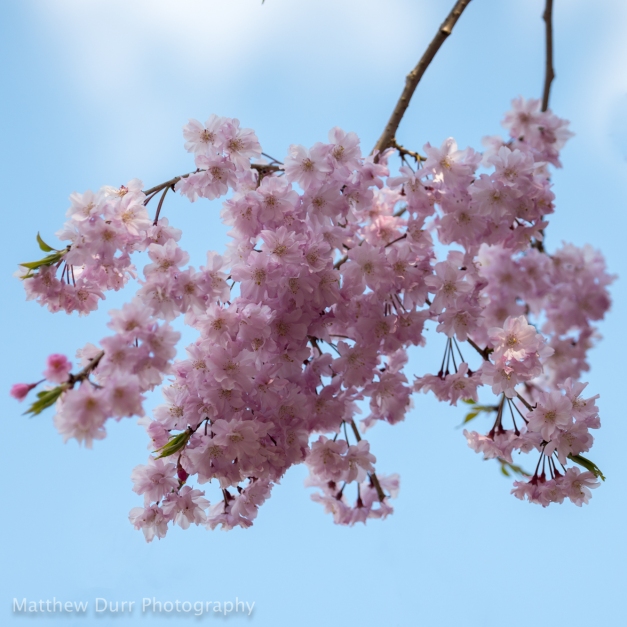
Still Vibrant
105mm, ISO 100, T4, 1/1600
Shooting flowers against a bright sky presents no problem to this lens.
In regards to “bokeh fringing”, I have always had a difficult time seeing the green and magenta tinged out-of-focus backgrounds and foregrounds, respectively. Being colorblind has its downsides in photography, so I did not test that (or personally see much of it) with this lens.
Flare
No lens is perfect, and the Laowa 105mm’s big weakness is its lack of resistance to all manner of lens flare. In still photography, any time the sun hits the front element, veiling flare significantly lowers image contrast, and various other reflective artifacts show up in images:
In videos, the problem is even more noticeable, as the sun’s reflections bounce off the sensor and reflect back from the rear element again:
In general, be mindful when shooting around a bright light source, and try to always use the included lens hood. Ugly as it may be, it keeps as much indirect light from hitting the sensor as possible (as well as grimy fingers).
Vignetting
Notably fast at f/2, aperture-wise, the Laowa 105mm exhibits vignetting even on an APS-c camera. Thankfully it is very even and falls off smoothly.
Wide-open, you will likely never notice the vignetting unless shooting against a sky or other uniformly-lit subject. If, however, you demand even cross-frame illumination on APS-c, use the lens corrections tab in Lightroom to change amount of vignetting to +20 (midpoint remains at 50). At f/2.8, amount of +10 corrects fully, while f/4 is already vignette-free. On a full-frame camera, expect there to be much heavier vignetting that likely doesn’t fully go away until at least f/5.6.

Deep Overhang
105mm, ISO 100, T3.2, 1/160
What little natural vignetting there is wide-open can actually help make a central subject “pop” a bit more from the background.
Distortion
Medium telephotos tend to show little distortion. The Laowa 105mm follows that trend nicely. Take note of the super-thin strip of bricks a couple pixels wide at the top of the image:
Within Lightroom’s own correction options, anything added or subtracted just adds more distortion. Even using the Laowa 105mm’s own lens profile within the program barely adjusts the image at all! This super-flat projection across the frame makes faithful reproduction of architectural lines a cinch.
Panorama Viability
I decided to add another sub-section to my lens review suite starting with the Laowa 105mm. I judge a lens’ usefulness as a panorama tool based off of how easily it can present a flat, sharp image. Lenses that have high cross-frame sharpness, low distortion, correctable vignetting, and no field curvature can serve well to make high-resolution panoramas. One lens that comes to mind is my Zeiss Touit 32mm f/1.8: I very often use it for 50+ megapixel panoramas and to easily create a much wider perspective than is possible from the “normal” field-of-view it sports.
If it wasn’t obvious from the above, the Laowa 105mm is a great performer for panoramas. The combination of its high resolution (even wide open!), flat image profile, and negligible vignetting/distortion make even basic stitching operations in Lightroom a breeze. The only thing to look out for is attempting a panorama with a strong light source, the veiling haze over parts of your image will cause headaches in attempting to stitch it all together.
Now how about we hit that recap already?
Pros and Cons
Pros
- Very tough build quality reminiscent of my tanky AI-s Nikkors
- Buttery-smooth operation in regards to focusing and T-stop adjustment while the f-stop aperture has soft clicks
- Very sharp and contrasty across the frame and produces great results even wide-open
- No field curvature or focus shift
- Apodization element serves its purpose in creating super-smooth bokeh in almost all situations, especially wide-open
- Non-existent purple fringing in real-world shooting
- Smooth and correctable vignetting
- Unmeasurable distortion
- Sports a depth-of-field 1-stop faster than a 70-200mm f/2.8
- Low price given the overall image quality and compared to its closest competitors
Cons
- Relatively slow transmission value makes this lens a tough sell for action photography/low light events
- Combination of manual focus, the razor-thin depth-of-field, and management of T-stops can prove challenging even for manual shooters
- Lens hood is truly awful (but still does its job “okay”)
- Diffraction starts early at f/11, and nailing critical focus at f/2 is close to impossible for moving subjects
- Apodization element’s effectiveness diminishes for bokeh highlights as the lens is stopped down
- A bit of purple fringing wide-open in the worst scenarios
- Poor flare handling (keep that lens hood on at all times)
- A “dumb” lens that does not relay any EXIF data to the camera
The Bottom Line
The Laowa 105mm is not your run-of-the-mill fast telephoto prime. Its apodization element and extremely well-corrected optical formula combine to make a lens capable of some really unique images. After finding out how sharp the lens is wide-open, I have never had to worry about a lack of detail in photographs unless I miss focus. Every time I take the lens out its performance amazes me for the price. Though it is not my first choice for critical low-light work or action photography, I still highly recommend this optic for anyone chasing objectively great bokeh.
That’s all for this lens review, guys and gals. Thanks for dropping by! It feels great to get back in the motions of writing lens reviews. My next review will likely be the cheap wide angle Rokinon 16mm f/2. A friendly reminder, any purchases of the Laowa 105mm f/2 through this link helps out this site and supports future posts. As always, have a great day!






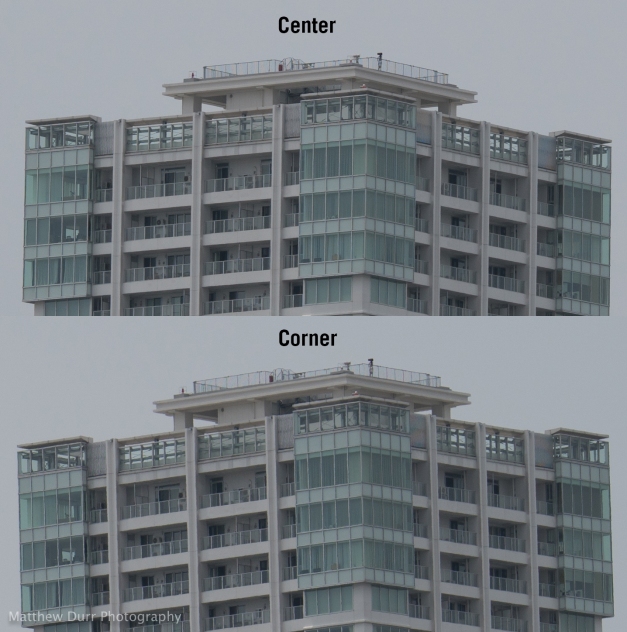


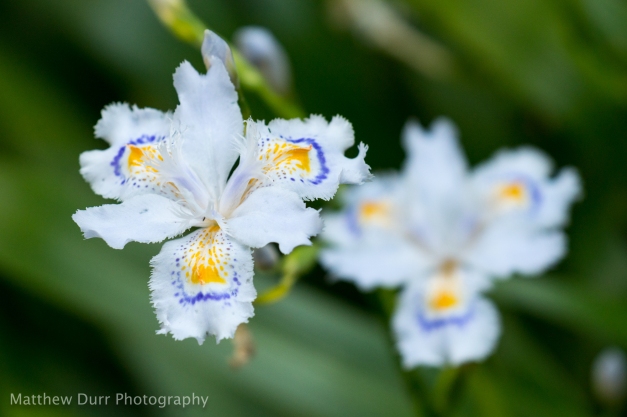







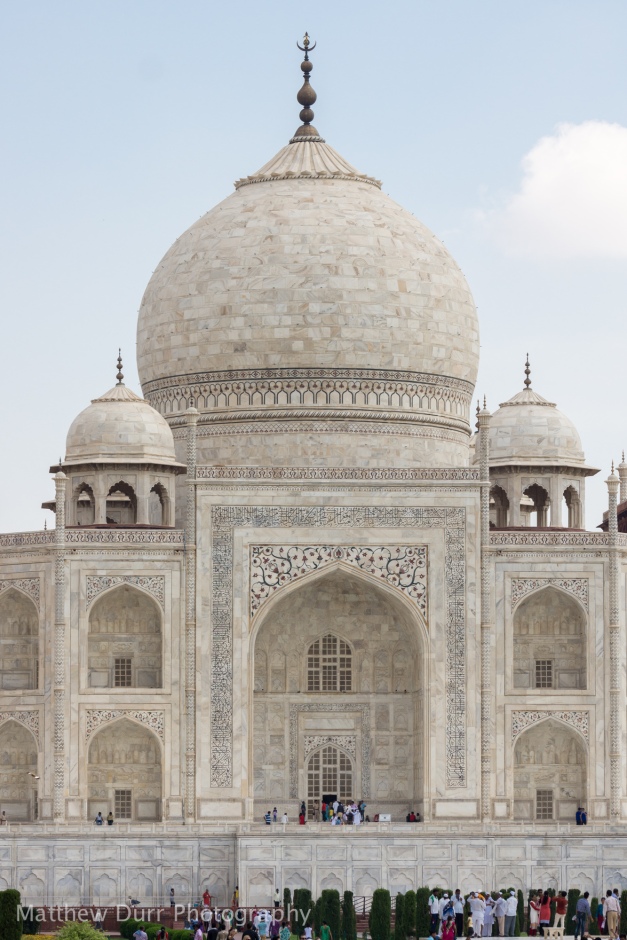




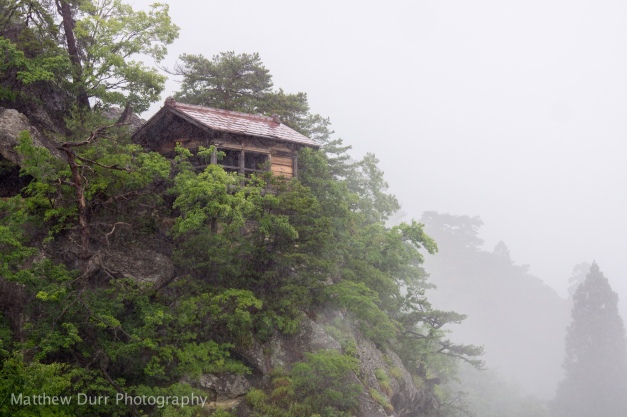










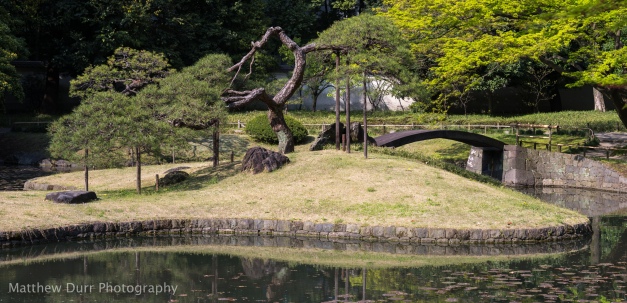
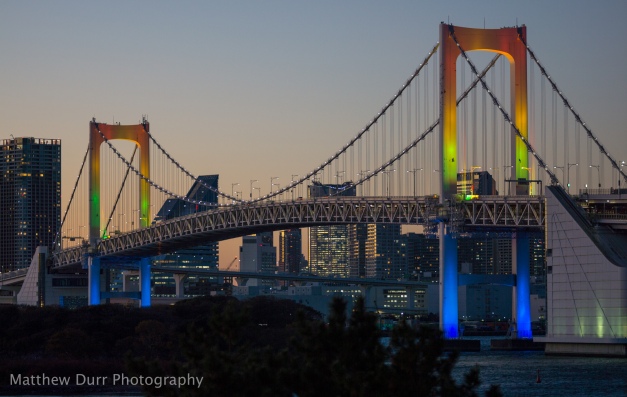
I’m very impressed with this chineses/Korean manual lens, such mitakon and laowa. If the taxes on Brazil were more “maleables” i would invest more on those.
I have kept track of Rokinon/Venus Optics/Mitakon lenses for a while, it’s surprising how much they are improving their optical formulas. It wasn’t until the 105mm f/2 STF that I became seriously impressed with the performance. Have you considered finding copies on eBay or some other online service to ship into Brazil?